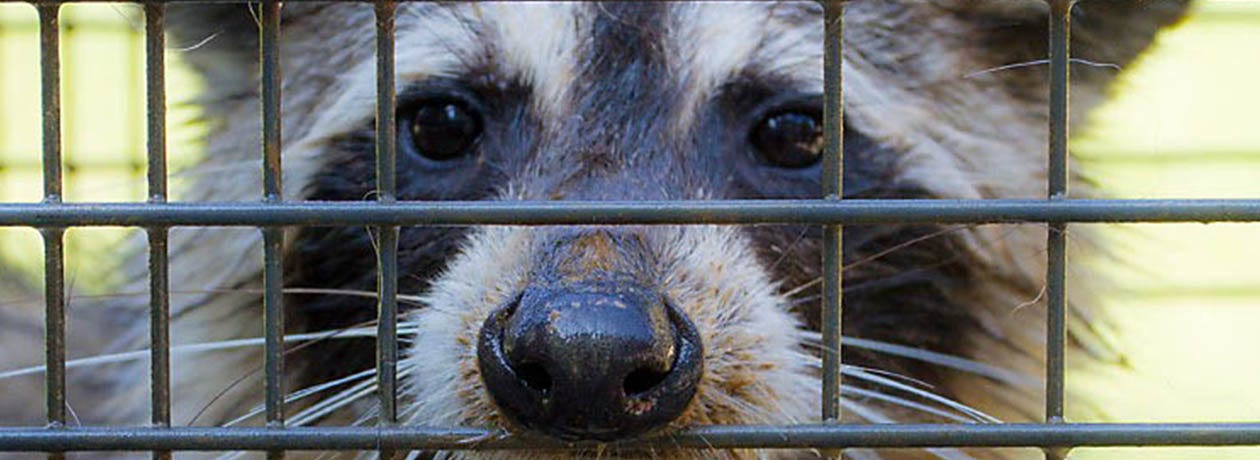Releasing an Animal from a Live Cage Trap

As you come out to find an animal trapped in your cage, you may breathe a sigh of relief that the worst is behind you, but then you realize that your job is far from over. You now have to remove it in a responsible and legally accepted manner. The type of animal you have will determine what may be done with it, and certain species will have special considerations to acknowledge. If you have any doubts about the rules in your area, a call to your local government’s wildlife department is in order.
Follow Local Game Commission Regulations
You should have already done your homework in preparation for the highly anticipated capture, as you will not want to wait until the last minute to find out what to do once your trap is triggered. Based on local trap laws, you should know where the animal may be released and whether it is protected and in need of special handling. With feral cats, there may be a feral cat rescue group or a locally sponsored trap-neuter-return program in effect in your area. If your intended capture is a feral cat, Havahart® offers a rescue kit made specifically for this purpose.
How to Approach the Caged Animal
Any animal that finds itself caught in a trap will likely go into a panic and can easily injure itself trying to escape, so it is up to you to calm it down by approaching slowly, taking soft steps and speaking in a soothing tone. Placing a blanket over the cage has been known to help quiet most animals, and if you happen to have a skunk in the cage you will definitely want to hold up a large sheet or blanket as you approach in order to protect yourself from being sprayed.
Be ready to move as soon as your animal is calm; you don’t want its thrashing around to force you to drop it, possibly knocking the trap open in the process. But some animals will not be as easily swayed by your calming attempts and will prove to be quite persistent in their escape attempts. As long as you believe it can be moved securely, do so immediately to prevent the animal from injuring itself.
Transport your animal in its covered cage, wearing heavy-duty gloves when carrying it, and bring it to a place approved by your local game commission for the animal’s relocation - preferably miles away from your home to prohibit its return. It should be in a region that your animal will feel comfortable in, offering plenty of opportunities for food and shelter.
Releasing an Animal Safely

Now comes the part that every trapper dreads: releasing it without getting attacked. Fortunately, wanting revenge is a human emotion and an animal’s instincts will drive it to seek cover and safety once released. Unfortunately, the animal may feel that the safest place for it in this new environment may be the cage it is in, and it may take some time before it gets brave enough to explore its options and find a more suitable hideaway. Remove the blanket if necessary, so that it loses confidence in its current enclosure and will want to find a more secure one, and try backing away to help bolster its courage.
Depending on the cage design, the door will open in different ways, but most will allow you to unlatch it without putting your hand too close to the animal. If the gloves prove to be too cumbersome for the task, see if the release mechanism can be manipulated with a pole, allowing you to stay some distance away. Either way, you will want to remain behind the cage, so that it opens in the opposite direction, facing foliage the animal can retreat to and hide within. When you return home, use rubber gloves to disinfect the cage with a solution that is 1 part bleach, 9 parts water. This will remove your scent and any germs the previous occupant may have left behind, leaving it ready for reuse in case your pest problem persists.
A Simplified Alternative to Ease Your Anxiety
If you are still panicking over the release process, rest assured that products are available that address this concern. Understanding the fears the consumer may have when forced to get so close to a wild animal, Havahart’ offers alternate versions of many of their cage designs that have a special mechanism at the handle to simplify both the setting and releasing processes. These Easy-Set® traps use patented technology to allow the user to both set and release from the top of the cage - nowhere near the door! Your hands also receive extra protection from the large hand guard surrounding the handle.
Don’t Treat Accidents Lightly
In the event that the animal you caught was not the one you intended to catch and is perhaps smaller than the animal types recommended for the particular trap size you are using, there is a possibility the animal will be able to stick part of its body through the bars. If you are scratched or bitten, proceed immediately to the nearest doctor or hospital to have your injury inspected. Wild animals - even the cute ones - may carry diseases such as rabies that are transmissible to humans.
Prevent It from Returning
Now that you removed the invading animal, ensure that it or another of its kind does not come onto your property again. Safer® Brand offers a variety of animal repellents designed for a wide array of species. Repellents come in various forms, including electronic ones:
Repellents:
- Sprays
- Granules
Electronic Repellents:
- Ultrasonic devices
- Sprinklers
- Static Shockers
Sprays and granules are formulated with ingredients that have been tested and proven to be offensive to specific animals. Make sure that the animal you need to repel is shown or mentioned on the label; even if it is not in the product’s name it still may work for additional animals (for example, Victor’s® Mole & Gopher Repellent also repels armadillos and voles). Ultrasonic devices emit sonic signals that distress and drive away the animals that are able to hear the frequencies the device is set for, while motion-activated sprinklers scare animals away with a sudden burst of water. If it is deer that are giving you trouble, posts that lure them in and give them a mild static shock are also available if other measures prove unsuccessful.
Once Havahart® traps help remove an animal from the property, the extensive line of professionally developed Safer® Brand repellents can help you eliminate your problem. Select the type you prefer based on what is appropriate for the animal you are bothered by, and if used as directed you shouldn’t have to go through the trapping experience again.
